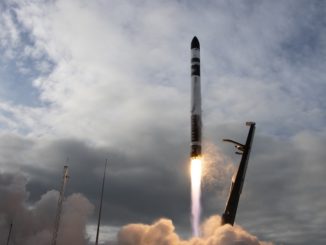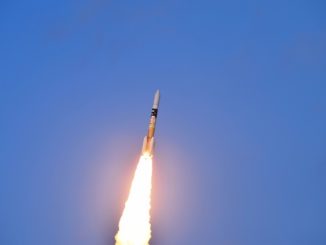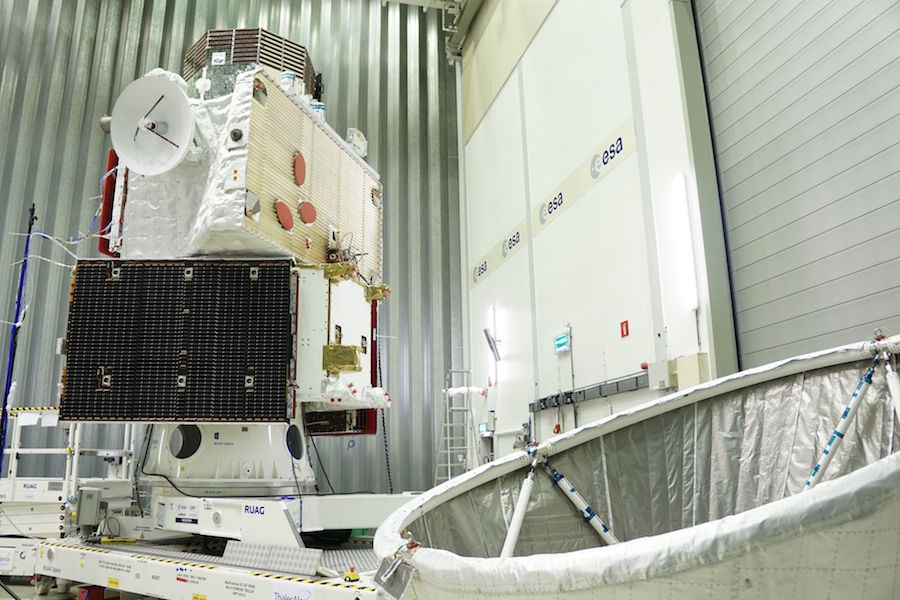
Three spacecraft built in Europe and Japan have completed their final joint tests to ensure they are ready for departure to Mercury on an Ariane 5 rocket late next year on the nearly $1.9 billion BepiColombo mission to survey the solar system’s innermost planet.
Officials displayed the BepiColombo spacecraft to the media last week in the Netherlands, where engineers are putting the probe to the test in the extreme thermal, acoustic and vibration environments it will encounter in flight.
Readying the mission to survive the searing temperatures at Mercury proved to be one of the biggest challenges in BepiColombo’s two-decade development.
“We have to survive 10 times the solar radiation we are experiencing at Earth, plus surface temperatures of up to 450 degrees Celsius (842 degrees Fahrenheit),” said Ulrich Reininghaus, ESA’s BepiColombo project manager, in a press briefing last week.
The European Space Agency-led project will dispatch two scientific orbiters to Mercury with instruments to map the planet’s landscapes and topography, peer into darkened craters that may contain water ice and a mysterious frozen organic sludge, and probe the scorched world’s interior structure by measuring its magnetic field.
“I think our two spacecraft we send to Mercury will, first of all, do a very comprehensive and thorough investigation of the planet and its environment,” said Johannes Benkhoff, BepiColombo project scientist at ESA. “It will help to unveil the mysteries of Mercury and hopefully provide clues to better understand the formation history of the planet and of our solar system.”
A propulsion module will go along on the 7.2-year trip to Mercury to steer the robotic science probes through the solar system with the aid of four ion engines.
Scheduled for launch in October 2018, the tandem mission developed by ESA and the Japan Aerospace Exploration Agency is the most ambitious expedition to Mercury yet mounted, and the first time the blazing hot planet will be visited by a spacecraft not owned by NASA.
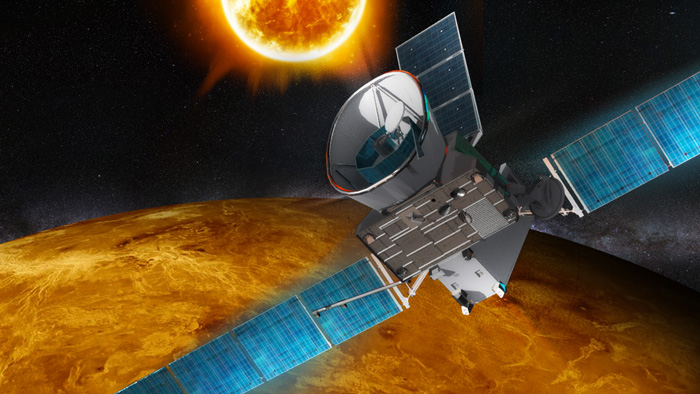
Two previous NASA missions — Mariner 10 and MESSENGER — previously explored Mercury. Mariner 10 zipped by Mercury three times in the 1974 and 1975, photographing less than half of the planet before MESSENGER made its own flybys and eventually entered orbit in March 2011 for a four-year global science campaign.
“BepiColombo will follow on MESSENGER’s results and get even more details (about Mercury),” Benkhoff said. “We will be able to answer many, many of the questions that were raised by the MESSENGER mission.”
Those questions include the nature of water ice deposits hidden deep inside permanently-shadowed craters near Mercury’s poles, and the source of the planet’s unexpected magnetic field.
BepiColombo’s European-built Mercury Planetary Orbiter carries 11 instruments, a suite comprising a high-resolution mapping camera, a laser altimeter, an accelerometer, and a set of spectrometers on a downward-facing science deck that will remain pointed toward the planet throughout each orbit.
The Japanese-made Mercury Magnetospheric Orbiter’s five science sensors will study the plasma environment around Mercury, attempt to image the planet’s sodium-rich tenuous atmosphere, and measure Mercury’s magnetic field.
The Mercury Transfer Module will shepherd the two science orbiters on the 5.5-billion-mile (8.9-billion-kilometer) voyage from Earth to Mercury. The engine section hosts no science instruments, but its two electricity-generating solar panels — each stretching nearly 40 feet (12 meters) long — will produce power for four rear-mounted xenon-fueled electric thrusters.
The ion engines, which can fire two at a time, will provide more than half the impulse BepiColombo needs for the one-way trip. The spacecraft will also use nine gravity boosts from flybys with Earth, Venus and Mercury to line up for orbital insertion at the innermost planet.
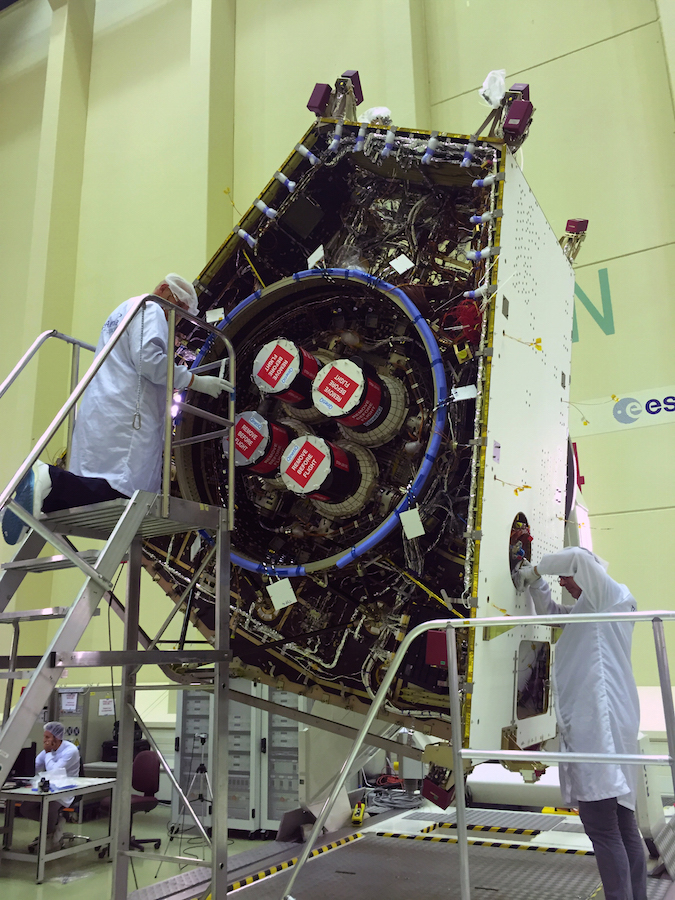
Named for Giuseppe ‘Bepi’ Colombo, the Italian mathematician and engineer who helped design Mariner 10’s Mercury flyby trajectory, the mission is due to arrive at its destination in December 2025.
The flight plan calls for the spacecraft to jettison the transfer module and fire rocket engines to slip into orbit around the planet. Japan’s magnetospheric orbiter, cocooned in a protective sunshield during the mission’s interplanetary transit, will be released in an egg-shaped elliptical orbit stretching up to 7,232 miles (11,640 kilometers) above Mercury.
Then the sunshield will be ejected as the European orbiter spirals closer to Mercury, eventually ending up in a tighter orbit ranging between about 300 miles (480 kilometers) and 930 miles (1,500 kilometers) from the planet.
The dual spacecraft will spend at least a year observing Mercury.
ESA and JAXA officials said last week the mission is on track for liftoff at the opening of an eight-week launch window Oct. 5, 2018.
BepiColombo’s launch window opens the same month the James Webb Space Telescope — a U.S.-European-Canadian observatory that will succeed Hubble — is set for blastoff on a different Ariane 5 rocket from Kourou, French Guiana.
Arianespace officials will meet with managers from both projects in September to determine which high-profile science mission will go first.
Engineers last month simulated the vibration and noise BepiColombo will experience during its rocket ride from Earth, capping a series of tests on the combined spacecraft in its launch configuration, which towers around 20 feet (6 meters) tall.
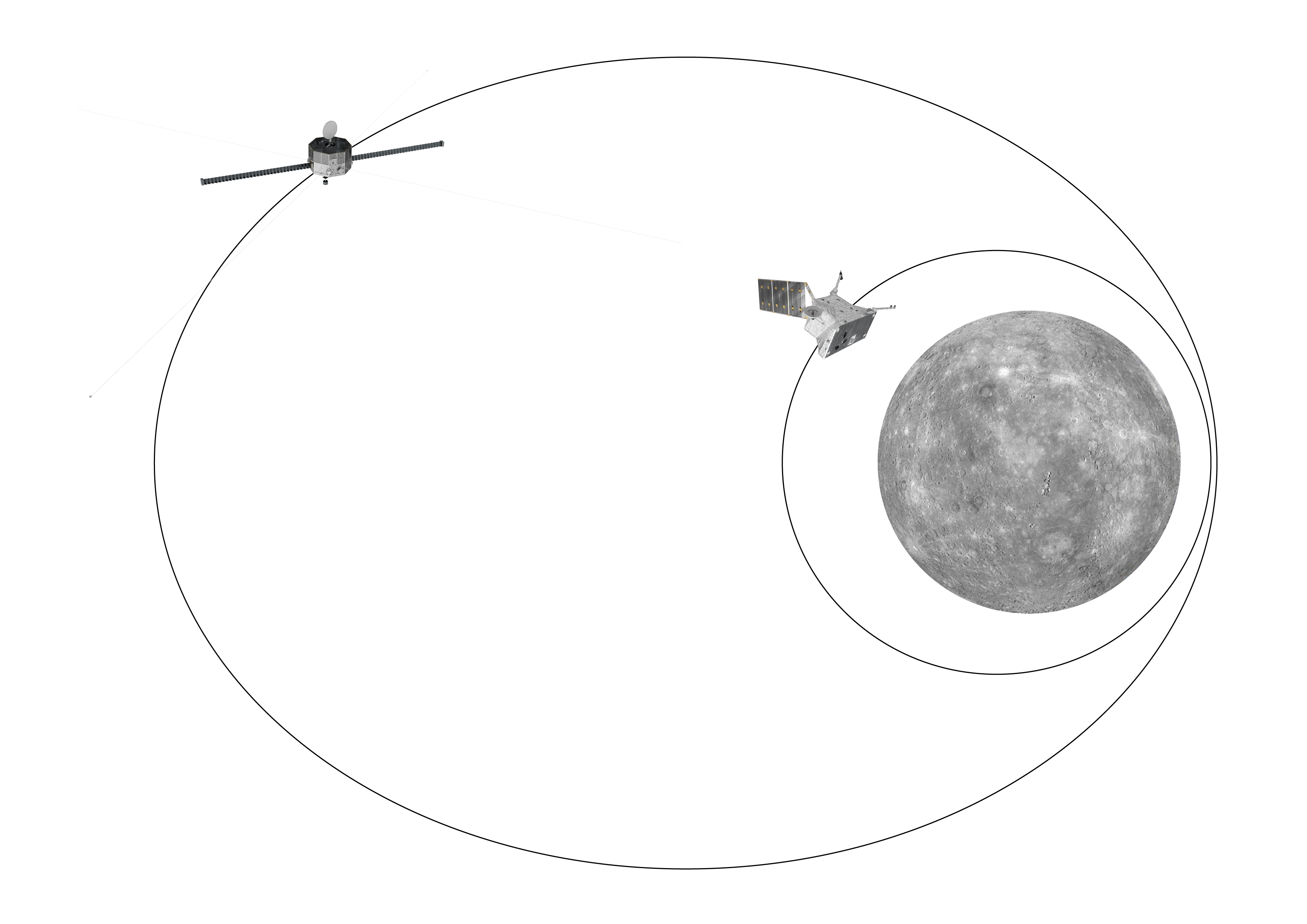
The ground team will disassemble the spacecraft in the coming months, conduct additional electrical checks, then place BepiColombo’s transfer module in a space environment simulator modified to mimic the extreme temperatures at Mercury. The propulsion section’s thermal test follows up similar exposure verifications already completed on the European and Japanese orbiters.
ESA originally intended to launch the BepiColombo in 2009 when the mission was formally selected by the agency’s science committee in 2000.
Crafting a spacecraft capable of withstanding the hot temperatures at Mercury turned out to be tough, officials said.
Engineers had to design new solar cells, develop heat-resistant pointing mechanisms for BepiColombo’s antennas and solar panels, and install mirrors to reflect sunlight and infrared heat.
Much of the technology had to be invented just for BepiColombo.
“The challenge was to develop a solar cell assembly that was capable of withstanding high temperatures and ultraviolet radiation at the same time,” said Markus Schelkle, BepiColombo program manager at Airbus Defense and Space in Germany, the mission’s prime contractor. “This was (something) we learned, and due to that, we had a really hard, long way to find a solution.”
BepiColombo also carries ceramic thermal coatings and titanium parts covered in silver and gold to ensure its communications antenna can function in the furnace-like temperatures at Mercury.
“We had several delays,” Reininghaus said. Work on the solar cells and high-temperature mechanisms “cost us much more time than we expected,” he said.
“The database on materials we had, even for qualified products, was good up to 125 degrees Celsius (257 degrees Fahrenheit),” Reininghaus said.
That was not good enough for BepiColombo.
“We’re flying into a pizza oven,” Reininghaus said. “This is why we had to test materials at very high temperature regimes, sometimes with very unwanted results.”
Email the author.
Follow Stephen Clark on Twitter: @StephenClark1.


